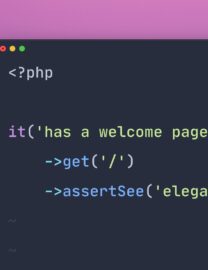This week: Integration tests in PestPHP, Full Site Editing, advantages of MVP, WordCamp, Headless WordPress, a tide of change in the WordPress world, and much more.

Denis Žoljom shows how to use PestPHP to create integration tests with WordPress in mind. Though tests in Pest are easy to write, WordPress integration is a greater challenge.

Gerasimos Tsiamalos shows the potential of Gutenberg blocks combined with FSE and a dab of CSS.
Gerasimos Tsiamalos Theme
Marty O’Connor explains the benefits of the MVP approach to releasing your project.
InstaWP has been developing very fast recently. But it was the integration with GitHub that impressed me the most.
XWP has asked WordCamp veterans to provide some advice to the newcomers. If you wish to know what the PacMan principle is, read on.
WordPress Vulnerability Database API lets you check if a given version of WordPress, plugin, or theme is susceptible to attack.
Robert Cnotalski explains why Osom Studio chose WordPress out of all the available technologies.
Grace Erixon describes how to create a simple app based on Headless WordPress, React, and WPGraphQL.
Carolina Nymark shows how to convert your website into one based on Full Site Editing.
Tom McFarlin shows how to work on several projects with one WordPress installation. Though he doesn’t use composer in this case, it is still worth reading.
Jonathan Bossenger broke some terrific news – in future he will be working at Automattic as a Developer Educator for the learn WordPress project.
Chris Lema has chosen to make some changes too. He is leaving LiquidWeb and the WordPress world to lead a yet unknown team in building SaaS services.
Remkus de Vries has also decided on a change of career. He switched a job at Servebolt for his own agency.
10up showboated their WP-based intranet app for WP Engine.
As it turns out, Elementor has a major vulnerability that allows uploading anything to the server provided you have an account on the site. If you are still using version 3.6.0, update immediately.
